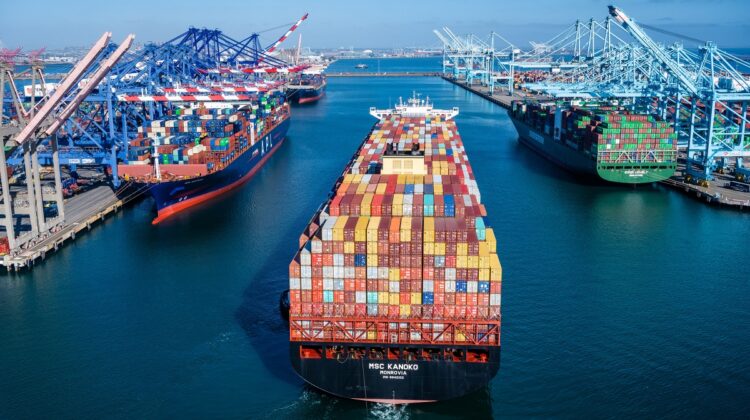
Supply bottlenecks leave container ships stranded
NEW YORK : Due to the COVID-19 outbreak, a trade bottleneck has left US businesses in a perplexed situation as they await goods from Asia — while off the coast of California, dozens of container ships sit anchored, unable to unload their cargo.
A direct consequence of the pandemic has led to the closure of factories throughout China and the problem started ever since March 2020 due to a dramatic change in buying habits of Americans as they stayed home and switched to buying electronics, fitness equipment and home improvement products in lieu of clothes.
This was followed by US companies flooding reopened Asian factories with orders, leading to a chain reaction of congestion and snags at ports and freight hubs across the country as the goods began arriving.
Main Street businesses are now forced to wait months instead of the usual weeks for a delivery from China, and no one knows when the situation will be resolved. Owners do a lot of explaining to customers, order more inventory than usual and lower their expectations for when their shipments will arrive.
The lockjam now has led to an additional delay of two months or more for companies that would earlier receive their orders in 30 days.
Companies are now spending more time on logistics rather than product development, and apologising to customers who expect a shipment each month.
The cluster of ships offshore is perhaps the most dramatic symptom of an overwhelmed supply chain. As production increased in Asia, more ships began arriving in the fall at ports in Los Angeles, Long Beach and other West Coast cities than the gateways could handle. Ships holding as many as 14,000 containers have sat offshore, some of them for over a week.
At times there have been as many as 40 ships waiting; normally, there is no more than a handful, according to the Marine Exchange of Southern California, a service that monitors port traffic and operations.
“With this type of backlog, it will take several weeks to work through that. It does not go away. And new ships are sailing to the US even as we speak,” shares a manufacturing adviser.
But not all is well on land.
Choke points on Land
They are choke points on land as well. It can take 8,000 trucks to haul the cargo away from a ship. But when all those trucks hit the road, there are not enough available when dockworkers are trying to unload the next ships in port.
Freight rail traffic has also been affected.
The pandemic itself is also retarding the flow of goods, stopping workers in warehouses at the ports.
Businesses also wait because of the high demand for space on ships, and inside the shipping containers that range from 20 to 45 feet long.
“Normally a shipment can be booked with a couple days’ notice and currently you have to book containers 30 days in advance,” says Peter Mann, CEO of Oransi, a maker of air purifiers and filters based in Raleigh, North Carolina. He has to account for shipment times twice as long as normal in his operating plans.
Supply disruptions can be a more serious problem for smaller companies because, unlike larger players, they may not be able to shift production to other countries — for example, Western Hemisphere nations whose products can be shipped to East Coast ports. And big companies can better afford to use air freight, which is more expensive than shipping.
Due to a massive competition for containers, the cost of importing is also peaking. The price can sometimes go up to five times as usual.
The impact of the bottlenecks has also led to exporters reeling under the crisis. When containers are unloaded at the ports, many are being sent empty back to Asia instead of being held and filled with US goods.
Source : ET
